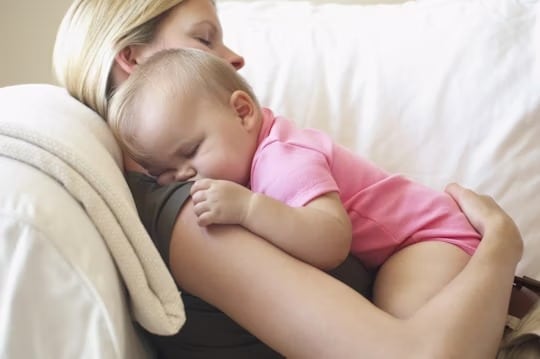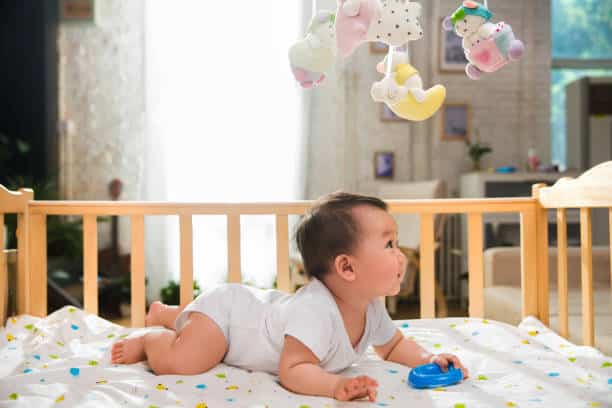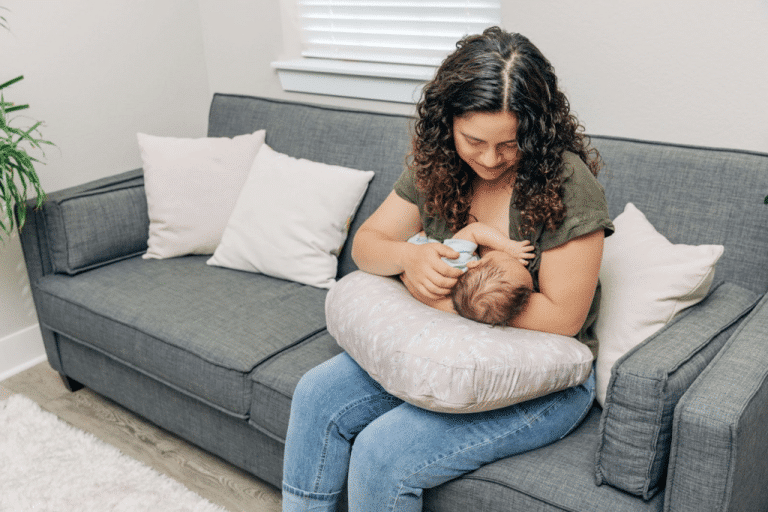Are you a new parent worried if your little one gets enough sleep? Or is your toddler challenging you to get enough rest? It is no wonder that babies sleep a lot. But the joy of becoming a parent catches you off guard.
Parenting becomes challenging as our little ones sleep in small rounds. Babies keep you awake at night after a long day of napping for ten to twelve hours.
Today, we will delve into the world of sleep training children and get a pro at parenting.
Let’s begin!
What is Sleep Training?
Sleep training is a practice to help your children slide into slumber for long hours at night!
Expecting parents are often impatiently waiting to welcome home their newborn. However, all you see is restlessness on their face after a week of giving birth. Most mothers experience post-pregnancy insomnia, and fathers experience sleepless nights in the process.
Sleep training for your little one comes as your savior in this situation. These training methods also help them soothe themselves when they wake up at night. The result is a healthy, happy, and well-rested family.
There are different ways to start sleep-training your children at home. It takes minimal effort and instant results at times. You will undoubtedly thank us for this infamous secret!
When Can I Start Sleep Training My Babies?
It takes four to six months for a baby to sync with the circadian cycle. Therefore, it becomes the perfect time to initiate sleep training.
Anything related to babies is sensitive and isn’t as easy. The same goes for sleep training! Babies take months to adapt to the atmosphere in their mother’s womb. Their body cycle has no idea about the time cycle of this world. Hence, they continue napping.
A healthy indoor environment is the key to helping your little one develop a healthy sleep cycle. During infancy, any child’s unique physical needs are our priority.
Therefore, we advise seeking a private consultation with doctors before proceeding with sleep training.
Five Full-Proof Ways to Master Baby Sleep Training
Now that we have a clear idea of sleep training, it’s also a good moment to consider the essential milestones for baby preparation, including setting up your baby registry to ensure a smooth transition into parenthood.
Our goal of mastering sleep training for our babies demands calculated effort.
As parents, we must begin understanding our baby’s unique physical needs and habits.
Here are our five favorite methods to help parents master baby sleep.
1. Come Back and Console Method
The comeback and console method encourages parents to leave their kids’ rooms for short intervals. Once you tuck your infant to bed, leave the room for two minutes and return to console them. The idea is to reenter the room before the baby starts crying out loud.
Mastering this sleep training method is easy, resembling playing hide and seek. However, parents have to increase the frequency of leaving the room. Also, come back to the console a little later than before.
Let your baby enjoy their privacy and soothe themselves back to sleep with minimal help.
2. Cry It Out Method
Well, not every parent is a big fan of the cry-it-out method. In this sleep training process, we recommend parents tuck their kids in the crib and leave the room.
Yes! Parents go to total extinction and do not respond to their baby’s cries. This sleep training method has the strict intention of letting the baby cry to sleep.
Soon enough, with no response from the parents, babies tire themselves. Then, they ultimately fall asleep.
However, there is always a chance of leaving your little ones traumatized and stressed.
3. No Cry Method
Postpartum insomnia is a real challenge. Thus, mastering the art of sleep-training babies is a foolproof way to ensure healthy sleep for parents.
The no-cry method is a gentle and stress-free technique to help kids. It promotes the idea of a baby adapting to the circadian cycle naturally.
To begin, we encourage parents to introduce rituals that help kids understand the transition from day to night. Here, consistency is the key.
With regular effort, babies often adapt to the natural circadian cycle and fall asleep automatically.
Therefore, the result is no cries, no chaos, and peaceful all-night sleep for the baby and the parents.
4. Drifting Chair Method
The drifting chair method is perfect for sleep training little older babies. Mastering this sleep training method demands patience and regular effort.
Begin by lying your baby in the crib and arranging a chair to sit on. Place the chair next to the crib and put your little one to sleep.
Every day, the chair drifted further away from the crib gradually. This process will help your baby fall asleep by themselves. However, proceed when they feel ready to let you drift slowly.
Do not force the process to avoid loud cries and mental pressure on little minds!
5. Fading Method
There is no end to a child’s craving for their mother’s presence. The fading method is another infamous sleep training method. During your babies’ bedtime, make a practice of slowly fading away.
It is similar to the drifting chair method. However, the parent leaves the room after cuddling their kids to sleep.
Babies often wake up and start crying in this way. But parents need to be a little strict and patient to enjoy the outcome.
We suggest trying the fading method over the CIO method for healthier sleep training in babies.
Summing It Up
Parenting is not an easy task. It often demands consistent effort, emotional intelligence, patience, thoughtful responsiveness, and respect.
Introducing sleep training from the age of four to six months becomes ideal. It helps your little one transition into a healthy all-night sleep.
Pick anything from Ferber, fading, or the chair method, and you are good to go! However, we recommend considering your baby’s temperament and comfort while introducing sleep training.
Which sleep training method do you think your baby will love? Comment below and share your experience with us!

















